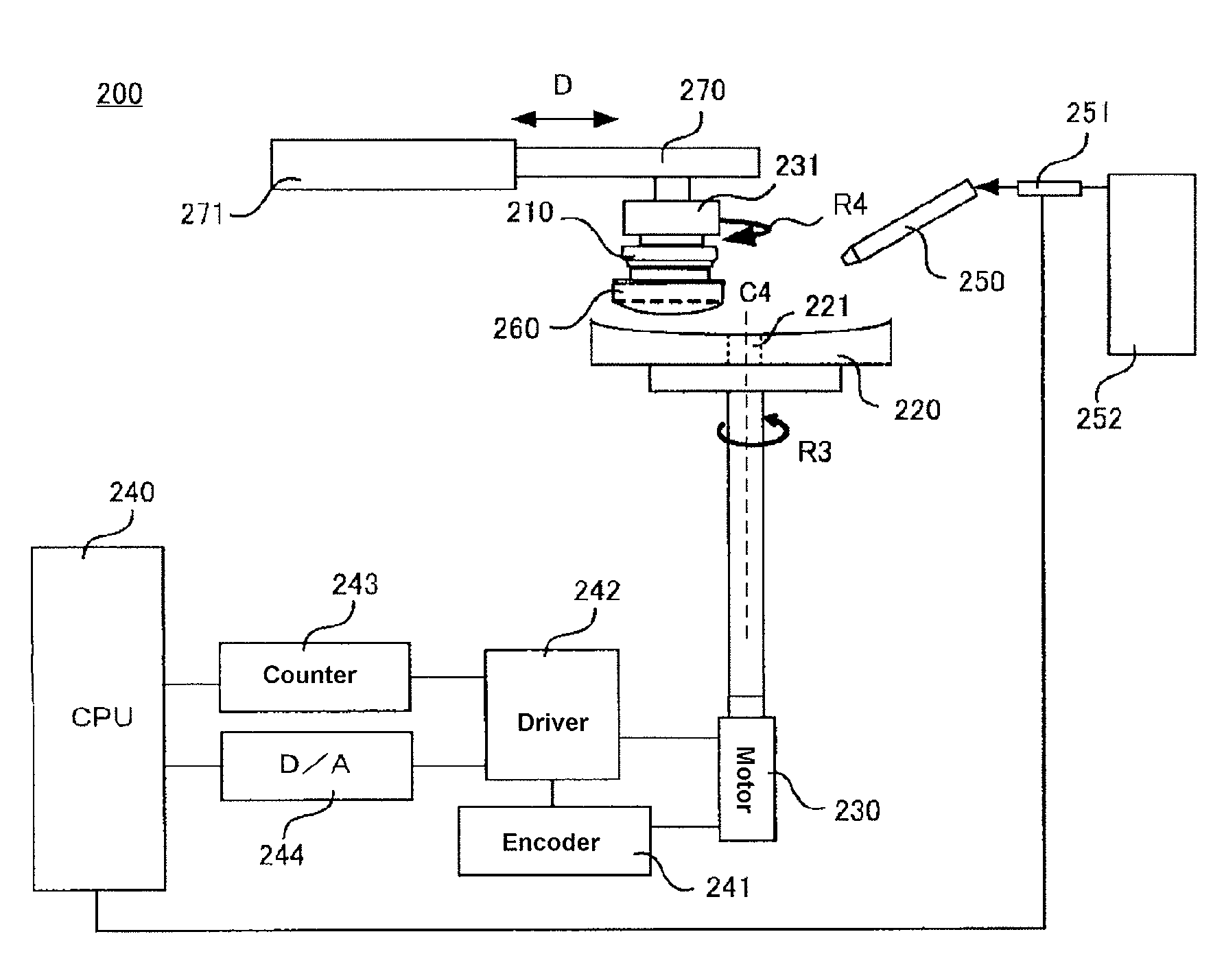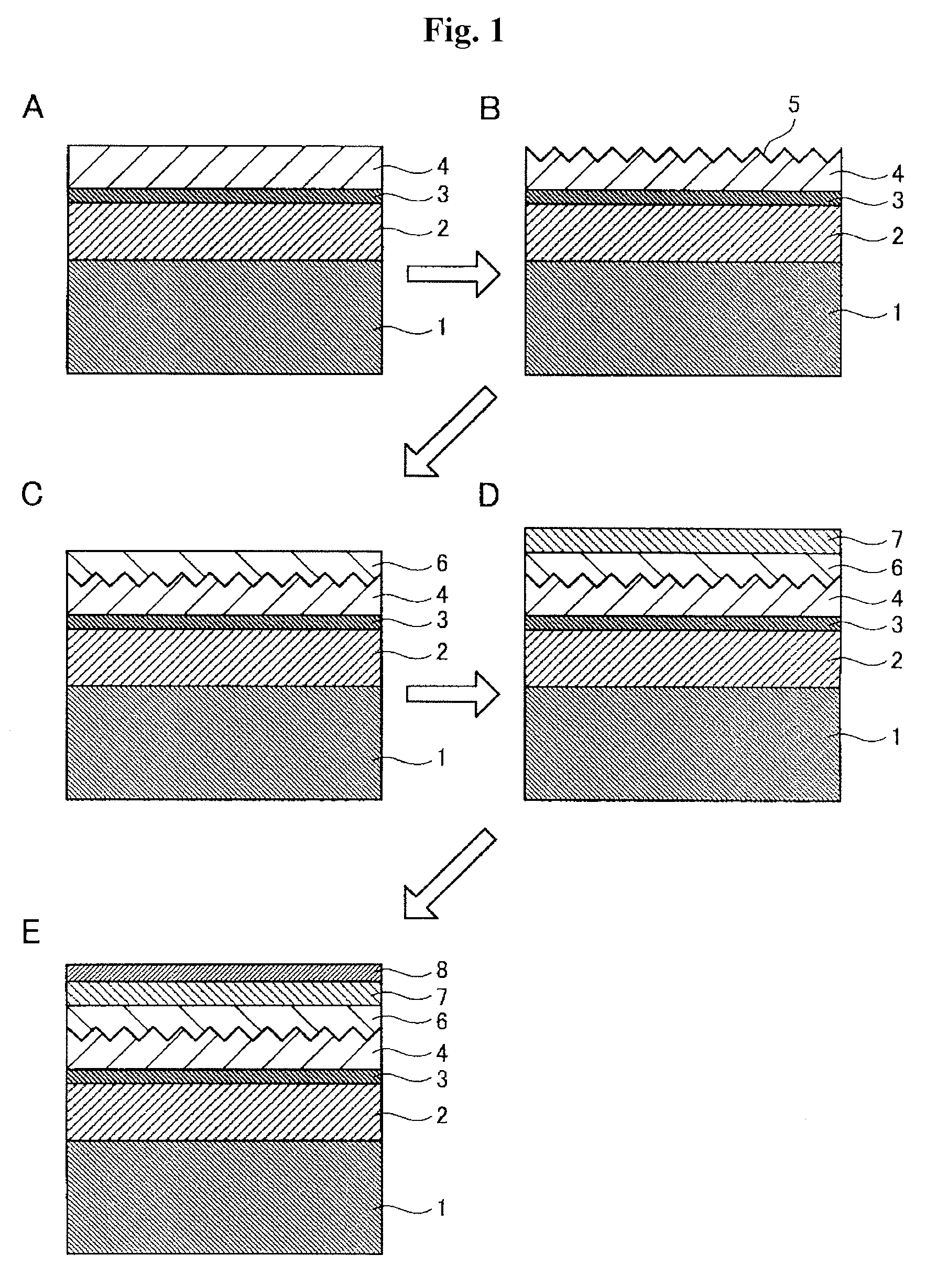Method of manufacturing polarizing eyeglass lens
a manufacturing method and technology of polarizing eyeglasses, applied in the field of polarizing eyeglasses, can solve the problems of polarizing lenses, inability to fully block diagonally polarized light entering from such diagonal directions, and polarization of light that can be blocked
- Summary
- Abstract
- Description
- Claims
- Application Information
AI Technical Summary
Benefits of technology
Problems solved by technology
Method used
Image
Examples
first modification example
(3-2) First Modification Example
[0118]This is an example in which the rubbing member is secured and the substrate is displaced by revolution. FIG. 5 is a drawing showing the steps of forming rubbing traces in this example. FIG. 5A is a top view when forming rubbing traces, and FIG. 5B is a side view. In the present modification example, in addition to the steps of forming rubbing traces described using FIG. 5, it is also possible to manufacture polarizing lenses by the same steps as those shown in above-described FIG. 1.
[0119]As shown in FIG. 5A, in the present example, rubbing head 24 is secured. Substrate 20 is secured on jig 23 with the side on which the orientation layer (not shown) is formed facing upward. Rod-shaped shaft 26 is connected to jig 23. Displacement reference 27 is provided at a position at some distance from jig 23 on shaft 26, and is secured by a support member, not shown. As shown in FIG. 5B, rubbing member 25 is mounted to the bottom of head 24. Rubbing member ...
second modification example
(3-3) Second Modification Example
[0124]In the present modification example, a surface plate is employed instead of securing a rubbing member to the head. The surface plate is rotated as a rubbing member to form rubbing traces on the orientation layer on the substrate. Except for the step of forming the rubbing traces, manufacturing can be conducted by the same manufacturing steps as those described with reference to FIG. 1 in the present modification example.
[0125]FIG. 6 is a top view showing the step of forming rubbing traces in the present example. As shown in FIG. 6, on surface plate 31 of any desired size, for example, on a circular surface plate, substrate 30 on which has been formed an orientation layer is secured to a separate support (not shown) so as not to rotate with surface plate 31 and so that the surface of the orientation layer faces surface plate 31 side as the sliding surface. It is positioned away from the center of surface plate 31.
[0126]An elastic member such as ...
third modification example
(3-4) Third Modification Example
[0131]In the present modification example, a surface plate is secured and the substrate is displaced by revolution with a displacement reference positioned away from the substrate as the center axis to conduct processing and form an orientation layer provided with arc-shaped rubbing traces. Except for the step of forming the rubbing traces that is described using FIG. 7, manufacturing can be conducted as in the other modification examples by the same manufacturing steps as those described with reference to FIG. 1.
[0132]FIG. 7 is a top view of the steps of forming rubbing traces in the present modification example. Substrate 40 on which has been formed an orientation layer comprised of a sol-gel film, an SiO2 layer, or the like is secured to jig 43 with the side on which the orientation layer has been formed facing surface plate 41. Rod-shaped shaft 46, for example, is connected to jig 43, and substrate 40 is displaced by revolution about displacement ...
PUM
| Property | Measurement | Unit |
|---|---|---|
| outer diameter | aaaaa | aaaaa |
| outer diameter | aaaaa | aaaaa |
| thickness | aaaaa | aaaaa |
Abstract
Description
Claims
Application Information
 Login to View More
Login to View More - R&D
- Intellectual Property
- Life Sciences
- Materials
- Tech Scout
- Unparalleled Data Quality
- Higher Quality Content
- 60% Fewer Hallucinations
Browse by: Latest US Patents, China's latest patents, Technical Efficacy Thesaurus, Application Domain, Technology Topic, Popular Technical Reports.
© 2025 PatSnap. All rights reserved.Legal|Privacy policy|Modern Slavery Act Transparency Statement|Sitemap|About US| Contact US: help@patsnap.com



